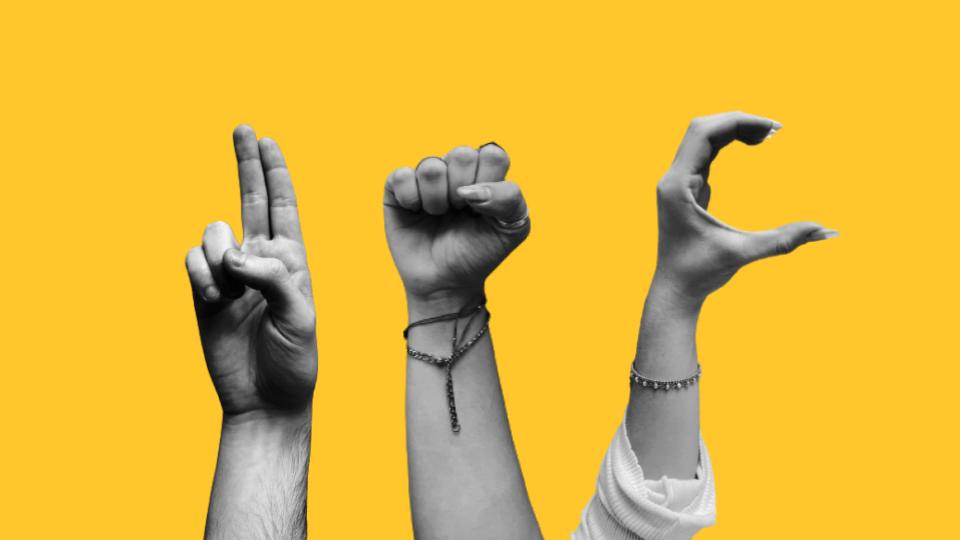Students demand University establish ASL program

USC’s American Sign Language Club is working to change the University standards that do not currently accept ASL as an avenue for fulfilling students’ foreign language requirement. At present, hearing students at USC who are fluent in ASL cannot use their experience to satisfy any foreign language requirement, and the two-unit ASL course offered also does not count toward any foreign language requirement — despite the state of California recognizing ASL as a foreign language 34 years ago, and UCLA offering 16 different ASL courses for foreign language credit.
Shelby Heiman, a junior majoring in chemistry and a member of the ASL Club’s Executive Board, said the club first began its fight for ASL recognition at USC last winter.
“We initially started this process in January when Yaya [Shi], who is hard of hearing, joined the Board,” Heiman said. “She brought to our attention how little of a deaf and hard-of-hearing community there is here at USC, and how difficult it is to find other deaf and hard-of-hearing people.”
Shi, a senior majoring in psychology and also an e-board member, said that, in her experience, individuals who are hard of hearing often do not go looking for a community because the stigma around being hearing impaired prompts them to conceal their disability.
“There’s some stigma around [being hard of hearing], and having an ASL program will provide more resources and inclusion,” said Shi, who agreed with Heiman that it would demonstrate that being deaf or hard of hearing “is not a bad thing.”
Brittany Comegna, a deaf first year graduate student studying law, said through an interpreter that acceptance and inclusion becomes much better for deaf students with the addition of ASL classes. Comegna said she experienced this firsthand at the Rochester Institute of Technology.
“[Rochester] has a thousand deaf and hard-of-hearing students,” Comegna said. “You can major in ASL and English interpreting; you can minor in ASL and deaf culture. It’s a great mixture of deaf people and hearing people and the attitude is just very friendly. At [USC], I feel like deaf people don’t exist. I feel like I’m alone.”
Erik Babakhani, a deaf senior majoring in architecture, echoed a similar sentiment, saying that going to class with an interpreter is often awkward, as people are hesitant to have relaxed conversations with him.
“[People don’t know] that they can be comfortable talking to me,” Babakhani said, adding that ASL acceptance at USC and additional ASL classes would make his experience at the University more comfortable.
To begin the process of convincing USC to recognize ASL as fulfilling the foreign language requirement, Shi said the ASL Club reached out to faculty members. They first worked with the Office of Student Accessibility Services, who encouraged them to reach out to the Undergraduate Board of Education. This prompted the club to send the Undergraduate Board of Education a letter listing reasons why they believed ASL should fulfill the foreign language requirement.
Nicole Wong, a senior majoring in environmental engineering and an e-board member, said that the club then reached out to UCLA to learn how their own ASL program was established. The UCLA professors told the club that USC was planning to introduce a two-unit course, “Introduction to American Sign Language,” in the fall, taught by Professor Karen Ruiz, which would aim to establish the fundamentals of American sign language in students.
Students made a significant effort to promote the ASL class, Heiman said, including encouraging ASL Club members to join, as well as making posters in the ASL class itself. At the time of publication, the class is nearly at full occupancy for the spring semester, with 17 of 23 seats taken.
ASL has an extensive history of being recognized as a foreign language. It was first recognized as such in the 1960s by William Stokoe, a linguist and professor at Gallaudet University, a private university for deaf and hard-of-hearing students in Washington, D.C. Over nine years, Stokoe observed and documented students signing at Gallaudet, and published his findings over two books in the 1960s.
“What he found was that ASL has the same linguistic characteristics as English does,” said Ruiz through an interpreter. “He was able to identify all those same parameters in English being present in ASL.”
Ruiz said that she was happy the ASL Club was pushing for recognition of the language.
“I’m willing to support them in their fight,” Ruiz said. “I am really proud of them, and I would like to support their endeavors to have ASL recognized.”
However, the logistics of getting the language recognized at USC remains an uphill battle. Emily Hodgson Anderson, the Dean of Undergraduate Education at the Dornsife College of Letters, Arts and Sciences, said, although there are plans to add onto the existing ASL curriculum, ASL does not currently meet the University’s requirements for a foreign language.
“For a foreign language to be recognized as something that fulfills the foreign language requirement, it has to have a complementary culture and literature,” Anderson said. “While [ASL] certainly has an accompanying culture, it does not have an acceptable written literature.”
Nonetheless, Anderson said that the conversation around USC’s foreign language requirements was one she wanted to continue having in the coming years with students, colleagues, and faculty.
“I want to develop [the ASL curriculum] first to see if there’s student interest, and then talk at the same time about the existing guidelines that we have,” Anderson said.

